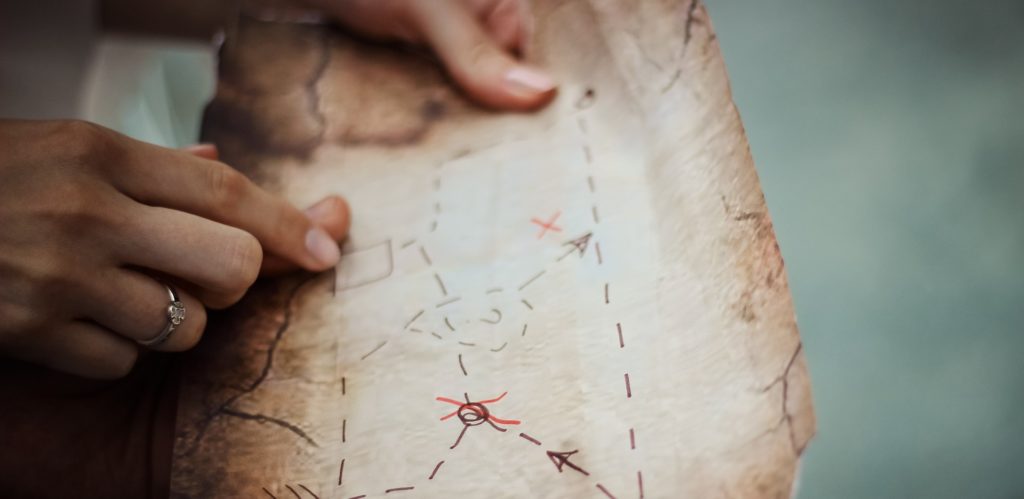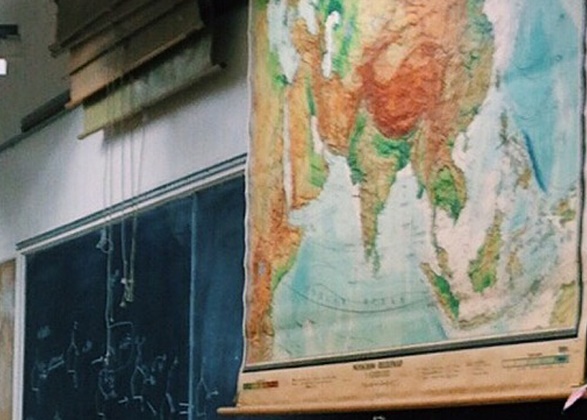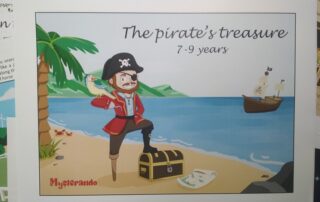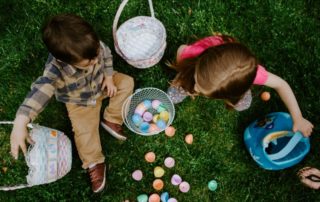How to create your own hunt in 8 steps

It is a lot of fun to make a treasure hunt or a scavenger hunt yourself! All you need is some time and some treasure hunt ideas, which you can find on this website.
Follow this easy-to-use 8 step guide and your own treasure hunt will be a success!
Step 1: Define the hunt
Make a plan and think about what you really want your scavenger hunt or treasure hunt to be about. There are a few important aspects that will go into the general idea of your hunt.
- Theme – What will your treasure hunt or scavenger hunt be themed around?
- Age – Who is the hunt for? Toddlers? Students? Adults?
- Time – How much time will your participants have?
- Event date – Will this hunt fall on a special date?
Once you have these, you can begin looking at the finer details of your treasure hunt. By setting a good foundation for your treasure hunt plans, the rest of the planning will go a lot smoother. Go through the points below to get your plan started.
About me

Hello, my name is Richard and I want to help you creating your own treasure hunt. I have been working as a youth instructor in New Zealand, Northern Ireland and Germany playing scavenger hunts with many kids and adults. On this page, I want to share my knowledge with you.
Step 2: How much prep-time do I have?
Time is of the essence. This question is essential because it will determine many aspects of your scavenger hunt. In our experience you will need at least 4 hours to prepare a nice scavenger hunt that everybody will enjoy. If you just have 1 hour for preparation, you might want to wait for a better time instead of being ill-prepared and having a hastily done scavenger hunt.
The more time you have to prepare, the better and more memorable the experience will be for the guests
You will need time for:
- Researching and selecting the clues (you will find more than 100 treasure hunt clues on our huge clue page)
- Creating the clues and riddle-cards
- Setting up the treasure hunt/ hiding the riddles
- Making a treasure chest
- Inviting the participants
Step 3: Select a route or a location
Traditionally a treasure hunt has a route which the players will follow where they are led from clue to clue and a treasure is waiting for them at the end of the route. If you haven’t selected a route, now is the time.
If you don’t want to do a step-by-step treasure hunt, you can provide the players with a list of riddles they must solve in a chosen order or in an order they feel like. You can also have a list of items for players to find in a given area. This is closer to a traditional scavenger hunt though we often use the terms interchangeably because hunts can be a combination of both. It is important to set boundaries of the location, otherwise some groups might get lost or go too far away.
Ensure that the routes or locations you choose are safe and under supervision throughout the reassure hunt.
Step 4: Create clues and riddles
There are many different styles of clues and riddles you can use for treasure hunts. The clues and riddles add a fun mental exercise to the tasks that can aid in learning and improving problem solving.
Ensure that your clues relate to the theme you have selected for your treasure hunt. Also make sure that the clues you choose are appropriate for the age and audience in terms of reading level and cultural background. For example: Though she might be popular in Britain, children from the Americas may not know who Peppa Pig is!
There are many different styles of clues that you can use for your treasure hunt:
- Straight-forward words: For younger audiences or for a quicker treasure hunt, you can make your clues simply straightforward words for things that the participants need to find.
Example: Flower – this clue can have participants look for a whole flower bed or a location that is associated strongly with flowers.
- Questions: Ask questions and have the answers as the clues. A popular format for treasure hunt clues is the “What am I?” format. Where you describe an object in the first person and the participant has to figure out what it is.Example: When the rain comes down, I go up. What am I? (Umbrella)
- Rhyming clues: Rhyming clues add a level of fun and whimsy to your scavenger hunt. They are especially interesting for kids or anyone who would appreciate the creativity.Example: Roses are red, violets are blue, you’ll find the next clue in one of your shoes.
- Fill in the blanks: Create clues that give away locations but have some letters removedExample: _N_E_ _H_ B_G _R_E (UNDER THE BIG TREE)
- Scrambled words: Another fun way to make clues more challenging is by scrambling the words of the clue. To save time, you can use an online word scrambler or anagram generator such as this one which works in multiple languages: https://ingesanagram.appspot.com/
- Coded messages: You can code messages to make clues more exciting. You can code them as emojis or other pictures

(the answer: light-house)
Photos: To give clues about locations, you can use pictures of the locations or of items from the locations to help participants find the place. Don’t make the pictures too obvious! You can zoom in or have pictures of items that are not too obvious. Don’t make it too difficult either.

his is a zoomed in photo of part of a classroom. You can use a clue like this to direct your participants to this location if they can figure out where it is.

Puzzle pieces: You can cut up a clue or picture into pieces and have participants collect the pieces and put them together to make a complete clue.
Step 5: Make the treasure!
Make all the hard work for the treasure hunt worth it! Allow your participants to find their treasure in a nice box. You can make a treasure chest using a cardboard box and paint or coloured paper. You can use this tutorial for a cardboard treasure chest: https://theimaginationtree.com/diy-treasure-chest/
You can also use any beautifully decorated box to store your treasure. You can have anything in the chest! Chocolate, bracelets, coupons or even movie tickets. You can fill the box with chocolate coins to make it more of a treasure.
Step 6: Send out invitations
Time to send out your invitations. According to the age group and theme, invite your guests with themed messages or invitation cards.
On the invitations, make sure to include:
- Where the scavenger hunt will take place
- What time the event will take place and for how long
- What the guests should wear
- Any items that guests will need to bring (torches, umbrellas, etc)
Give people enough time to RSVP their attendance for the treasure hunt. Send the invitations out a week before the event is scheduled and confirm attendance the day before. This way you will know how many people to expect in case you need to make any last minute adjustments to cater for the number of people in the group.
Step 8: Let’s go!
Now that everyone’s here, it’s time to get ready for the scavenger hunt. Before you jump right into it, it may be a good idea to have a little icebreaker and get to know one another. This can also help with team formation.
You can search online for icebreakers that are appropriate for your chosen age group.
Two truths and a lie is always a fun ice breaker for many ages. For younger kids, you can energize them with a game of Simon Says.
Now that you’ve gotten to know each other, it’s time to put your hard work to test and let everyone in on the adventure!
For more ideas, riddles and tips … Visit our Scavenger Hunt Blog!
Great scavenger hunt for kids: Mysterando Games
A Mysterando scavenger hunt for kids makes organizing a special birthday event for your children quick and easy! Everything is prepared and ready for you—simply print out the pages, cut out a few items, and read the easy-to-follow instructions. Great instructions—logical, easy to follow, and super practical! The scavenger hunts [...]
Outdoor Scavenger Hunt – Ideas and Clues
Outdoor Scavenger Hunt Fresh air, lovely weather, quality time – All some great reasons to organize some safe outside time with an outdoor scavenger hunt. Here are some ideas on how you can organize a scavenger hunt for friends and family in the outdoors. [...]
Office Scavenger Hunt
Many of us spend a lot of our week in the office around people from a variety of backgrounds. An office scavenger hunt is a great way to build a stronger relationship among people in a shared space. […]
Scavenger Hunt Around The House
Make time spent with family, friends, and kids fun and meaningful with these home scavenger hunt ideas you can implement around the house. […]
Bachelorette Scavenger Hunt
Bachelorette parties are a rare opportunity to make a friend feel fabulous right before their wedding. Here’s how you can use a bachelorette scavenger hunt to make the bride-to-be feel extra special. […]
Library Scavenger Hunt
A library scavenger hunt is a perfect way to learn about books and the wonders of the library. Here’s how you can organize one for participants of all ages. […]






